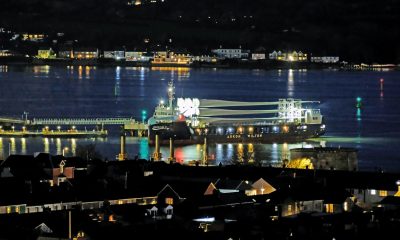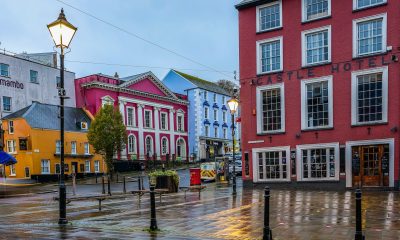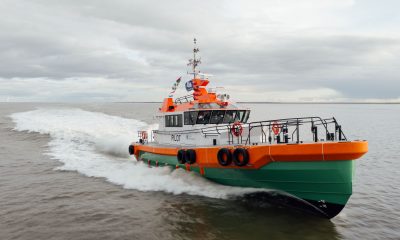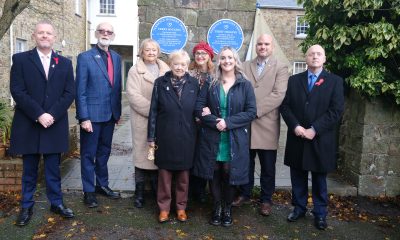Community
Wales hurtling towards 10,000 care home bed deficit over next decade
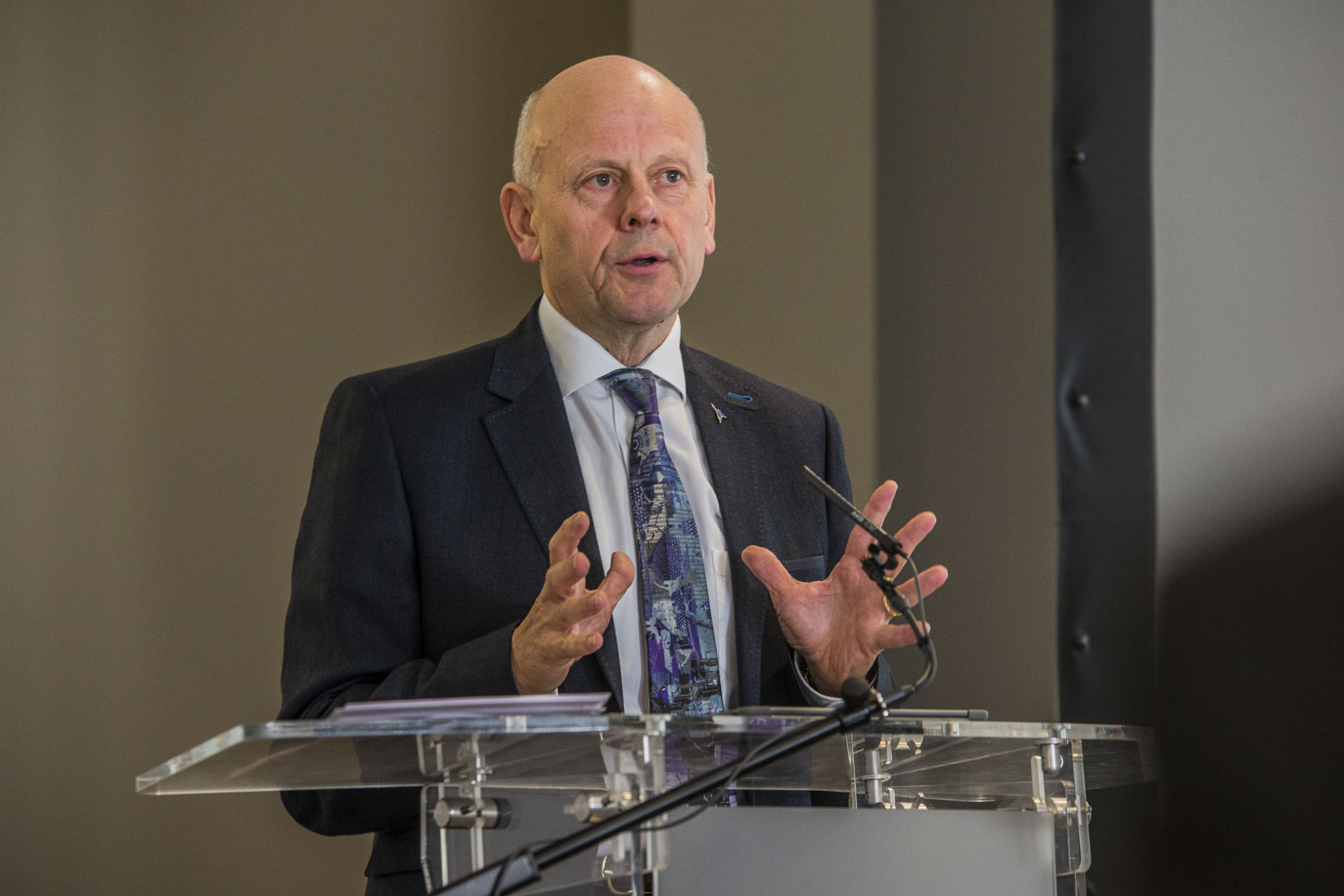
EXPERTS have warned there will be desperate shortage of 10,000 care home beds in Wales over the next decade.
The alert has been raised specialist business property adviser Christie & Co who say there is a growing need for new, “future proof” care homes to meet the need.
Their prediction comes at a time when demand is spiralling upwards, with the over 85 population set to double over the next 20 years.
According to sector champions Care Forum Wales (CFW) the “alarming figures” illustrated the need for social care to be funded properly for existing homes to survive and encourage the development of new ones.
CFW warned that Wales was “sleepwalking into disaster” because the growing shortage of care home beds would pile pressure on the beleaguered NHS when hospitals were already virtually at breaking point.
Building new care homes is a costly business as Gwynedd and Flintshire county councils have shown recently.
They have plans to build two new facilities with a total of around 100 beds between them at an estimated cost of more than £250,000 per bed.
If their figures are correct that would mean it would mean it would cost £400 million for the extra beds needed in North Wales and £2.5 billion for the whole of Wales over the next 10 years.
Worryingly, Christie & Co also revealed in the report that 40 elderly care homes in Wales closed and only four opened between 2020 and 2023 – with no new ones in North Wales.
Among the closures in North Wales were Trewythen Hall in Gresford, Bay Court in Kinmel Bay, Gwastad Hall in Cefn y Bedd and Morfa Newydd in Greenfield with the loss of more than 160 beds.
CFW Chair Mario Kreft MBE said: “The report from Christie & Co paints a bleak picture an illustrates how the existing crisis is going to get even worse, creating a double whammy for our overstretched hospitals which have rows of ambulances queuing outside and patients on trolleys in corridors.
“Instead of being able to build more care homes to meet growing demand, we are seeing more and more care home closures.
“The cost of building new care homes and replacing the beds we are losing now is absolutely eye-watering.
“Our public finances in Wales are already under pressure so where is this money coming from?
“The way care homes are funded in Wales is a total postcode lottery with 29 variations on a theme, with most of social care being commissioned by the 22 local authorities and seven health boards.
“Within that there is a gaping North-South divide with five of the six county councils in North Wales paying the lowest fees, arrived at by a fee-fixing cartel known as the North Wales Regional Fees Group.
“The one shining exception is Conwy Council where earlier this year announced inflation-busting plans to increase fees by up to 20% after warnings that care homes were at risk of financial meltdown and closure.
“Following a long-running campaign by Care Forum Wales they have introduced fairer fees which reflect the actual cost of providing care for vulnerable people in privately run homes, including those with dementia.
“That came about because Conwy broke away from the North Wales Regional Fees Group and took our advice by commissioning leading healthcare economists Laing & Buisson to analyse the true costs of care providers for the current year.
“It’s and internationally recognised tool to ensure that and those living and working in care homes can receive the best care, while at the same time, ensuring that the
“This is something we have been calling for over many years. All we want is fairness in line with the Welsh Government’s ‘Let’s agree to agree’ guidance.
“The fundamental issue threatening the viability of care homes is the unrealistically low fees that the vast majority of councils and health boards pay, fees that come nowhere near covering the true cost of providing care.
“Economically, it would make a lot more sense to ensure the financial security of our existing care homes instead of just relying on the forlorn hope that somebody is going to magically build enough new ones to meet current needs and the increasing demands for social care.
“We’ve had a generation of injustice and it’s a generation where the institutional prejudice and discrimination against the private care sector in Wales has meant that those living and working in these fantastic community assets have not been valued.
“The problems we have in social care lead to the pressures in the NHS which lead of course then to extra costs being placed on the NHS which would largely be alleviated if local authorities had a more enlightened approach to social care.
“If Conwy can do it, the other five local authorities in North Wales can and should do it and of course, the money has always been there. It’s how you politically choose to spend it.
“Across the famous Foryd Bridge, which links Kinmel Bay and Rhyl, Denbighshire County Council is budgeting announced much smaller increases of around 8% on rock bottom fees which have been immediately wiped out by inflation and the cost of living crisis.
“The vastly differing rates mean that Denbighshire will be paying £9,224 a year less per person than Conwy towards the cost of giving exactly the same level of nursing care to residents.
“It is simply an outrage. It’s an affront to the families that that bridge spanning the mouth of the River Clwyd can mean such a massive difference for vulnerable people, including those with dementia.
“The families of those people, who will often be expected to make up the difference, need to ask why and quite frankly, it is a bridge too far.
“This is undoubtedly a stealth tax on families and quite frankly, the people making these decisions in those authorities should be utterly ashamed of themselves in the way they are betraying vulnerable people including those with profound dementia and their families.
“What this demonstrates is that there is an urgent need for us to look again at the way social care is funded.
“We need a national approach to eliminate this iniquitous postcode lottery so that the people for whom we provide care and our staff are treated fairly.
”This is too important to be left to local authorities and health boards alone – it has to be driven by the Welsh Government.”
Pictured: Mario Kreft MBE, Chair of Care Forum Wales
Community
Pembrokeshire Lottery makes Superdraw winner’s Christmas extra special

ONE lucky Pembrokeshire Lottery player has scooped a festive windfall after winning the £10,000 Christmas Superdraw held on Wednesday 3 December.
The winner, Mr Damon McGarvie, formerly of Milford Haven and now living in Llangwm, was selected with lucky number 41475. He plays through a salary-deduction scheme run by his employer, Pembrokeshire County Council.
Mr McGarvie’s name was announced live on Radio Pembrokeshire, after which the Pembrokeshire Lottery team made contact and presented him with his cheque later that day.
Speaking after the win, Mr McGarvie said he and his wife will be jetting off on a once-in-a-lifetime holiday over the festive period, thanks to the surprise Christmas windfall.
Pembrokeshire Lottery Manager Abigail Owens said:
“I am so pleased for Mr McGarvie. He has contributed to the Pembrokeshire Lottery for many years, and it is only by the continued support of our players that we are able to assist so many local businesses with interest-free funding from the loan fund.”
The regular weekly £2,000 draws continue in the run-up to the January Superdraw, which will offer a £4,000 prize.
To sign up or order Pembrokeshire Lottery gift subscriptions for Christmas, call 01646 690800.
Photo caption: Damon McGarvie with his winner’s cheque.
Community
Care home fees in Wales remain among the lowest – but families still face crippling bills

WALES continues to offer some of the most affordable care home places in the UK, with residents paying hundreds of pounds less each week than in London or Scotland, new figures reveal.
The average weekly cost of a residential care home place in Wales stands at £1,156 – £392 cheaper than in London (£1,548) and £142 below the UK average of £1,298, according to data published by the country’s largest care home reviews website, carehome.co.uk.
Even when nursing care or specialist dementia support is required, Wales remains significantly cheaper than most of the UK. A week in a Welsh nursing home with dementia care costs £1,440 on average – £327 less than in London and £124 below the national figure.
The figures, based on self-funder fees collected on 9 September 2025, underline a stark north-south divide that has persisted for years.
London is by far the most expensive region, with basic residential care now averaging £1,548 a week. Scotland, where care workers benefit from a higher minimum wage settlement, comes a close second at £1,539. In contrast, the North East of England remains the cheapest area at just £1,112 a week for residential care – almost £200 below the UK average.
Sue Learner, editor of carehome.co.uk, said the regional variations were only part of the story.
“Wales is the third most affordable region for most types of care, which will come as a relief to many families here,” she said. “But even at £1,156 a week, the bills add up to almost £60,000 a year. For the 49 per cent of residents who pay for their own care, these costs are devastating.”
The financial pressure is compounded by differing rules on state help across the UK. In Wales, anyone with assets below £50,000 qualifies for local authority support – more than double England’s £23,250 threshold and well above Scotland’s £35,000 limit.
Ms Learner warned that rising staff wages and looming increases in employer National Insurance contributions would push fees higher everywhere.
“Local councils are already stretched to breaking point,” she said. “Without genuine reform of the social care system – something governments have been promising for decades – more and more families will have no choice but to sell the family home to fund care.”
The website, which carries 390,000 independently verified reviews, is urging people to plan early and seek expert advice. Its free Care Helpline (01488 501 499) is available to anyone looking for a home that offers both quality and value for money.
As the population ages and demand grows, campaigners say the latest figures are another reminder that the postcode lottery in care costs shows no sign of disappearing.
UK care home fees at a glance (average weekly self-funder rates)
- London: £1,548
- Scotland: £1,539
- South East England: £1,446
- Wales: £1,156
- North East England: £1,112 (cheapest)
- UK average: £1,298
Source: carehome.co.uk, 9 September 2025
Community
Folly Farm marks second birth of critically endangered rhino

FOLLY FARM is celebrating the birth of another critically endangered eastern black rhino calf – and it’s a boy!
This is the second rhino calf to be born at the family-run zoo, and the second in Wales as part of a managed breeding programme through its membership with EAZA (the European Association of Zoos and Aquaria).
After a 15-month long pregnancy, mum Dakima gave birth to a healthy male calf on Thursday 27 November. With only an estimated 39 eastern black rhinos born in the UK in the past 25 years, it’s a significant achievement for the captive European Endangered Breeding Programme (EEP) for black rhinos.
Eastern black rhinos are classed as critically endangered due to poaching and loss of habitat. There is thought to be an estimated 1471 Eastern black rhino left in the wild and around 109 in zoos across Europe, including Folly Farm’s newest addition.
The calf made its appearance at 6.34am and within a couple of hours was standing up, following mum around the enclosure and had started suckling.
12-year-old eastern black rhino Dakima arrived at Folly Farm in May 2017 as part of a European breeding programme and met her mate, 14 year-old male Nkosi.
Mating rhinos can be unpredictable, but their relationship blossomed and Dakima gave birth to her first calf at the start of 2020. Male calf Glyndŵr was Dakima’s first born and the first rhino calf to have been born in Wales. Glyndŵr was named after Folly Farm’s Founding Director, the late Glyndŵr Williams, and has since moved onto another animal collection to continue the breeding programme for the species.
Eastern black rhinos are solitary animals and therefore usually reside in their own paddocks. But when the time was right, Dakima and Nkosi were reintroduced again for some carefully planned ‘date nights’ – and keepers predicted she fell pregnant sometime in August 2024. After having Dakima’s stool sample analysed at a specialist lab in Chester Zoo, who run the breeding programme for Eastern black rhino, it was confirmed that baby number two was on the way, with a due date of mid-November 2025.
Conservation Officer, Jack Gradidge, said: “It’s always heart-warming to welcome new arrivals as part of the European Breeding Programme through our membership with EAZA (The European Association of Zoos and Aquaria) – but it’s even more special when it’s such a significant animal and one who’s wild cousins are under threat.
“Dakima was a great mum with Glyn so it’s wonderful to see these instincts are still just as strong the second time around. She’s being very protective of her new baby, showing they have a strong bond already.
“This is such a monumental event for all the staff here and the zoo team have worked incredibly hard to create an environment where the rhinos felt comfortable enough to mate.
“Not only is this calf helping to increase numbers of a critically endangered species, he’s also the second rhino ever to be born in Wales – with his brother being the first!”
Along with other zoos across Europe, Folly Farm is part of a breeding programme to help increase the numbers of Eastern black rhino in captivity and, ultimately, the wild. They support a number of conservation projects alongside various animal charities – including their new partnership with ‘Helping Rhinos’, a UK based organisation who, amongst various other conservation initiatives, support a rhino orphanage in South Africa, caring for young calves who have become victims of the poaching crisis.
Simon Jones, the CEO of Helping Rhinos was delighted with the zoo’s happy news; “We are absolutely delighted to welcome news of this beautiful eastern black rhino calf at Folly Farm.
We are grateful for their support of Helping Rhinos’ efforts including the care of young calves orphaned by poaching.”
Most animals give birth at night under the cover of darkness – and Dakima gave birth early in the morning, just before the keepers arrived to start their day.
Jack explains: “Our rhino keeper opened up the rhino house and the first thing he saw was the security camera footage where a tiny newborn rhino was seen happily padding about the enclosure. After quietly taking a sneaky peak at the beautiful new calf to confirm what he had seen – he let the team know the happy news that baby had arrived!
“We then left Dakima alone with her new bundle of joy, giving them both some space to bond – but continued to monitor them on the cameras and did regular spot checks to ensure baby was starting to feed.
“For us, the next steps are just to keep an eye on Dakima and make sure the calf stays healthy and gets everything he needs from mum. Our goal is always to let nature take its course and interfere as little as possible.
“Nkosi will be a bit of an absent father, but that’s perfectly normal as male rhinos don’t have anything to do with their offspring in the wild. It’s unlikely we’ll introduce him to the calf for some time.
“In the wild, rhino calves can stay with their mums for up to four years, after that there’s a possibility this new addition could one day be released into the wild to help boost population numbers – or move to another zoo to continue the breeding programme in Europe just like his brother.
“It’s exciting to be playing our part in helping to safeguard these amazing animals for future generations.”
Folly Farm’s rhino keepers will monitor mum and baby closely over the coming weeks and they will be back out in the enclosure in due course.
Visitors shouldn’t expect to see the calf for a while but Folly Farm will be posting updates on their social media channels.
Folly Farm’s Kifaru Reserve welcomed rhinos to the park ten years ago almost to the day! It is a £500,000 purpose-built exhibit which tells the story of the role of modern zoos in conservation and highlights Folly Farm’s hands-on commitment to conservation through the projects it supports in the wild and closer to home.
For further information please visit https://www.folly-farm.co.uk/.

-

 Crime2 days ago
Crime2 days agoDefendant denies using Sudocrem-covered finger to assault two-month-old baby
-
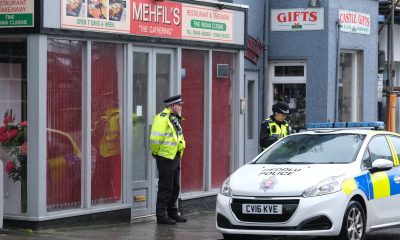
 Crime1 day ago
Crime1 day agoPembroke rape investigation dropped – one suspect now facing deportation
-

 Crime6 days ago
Crime6 days agoMan denies causing baby’s injuries as police interviews read to jury
-

 News1 day ago
News1 day agoBaby C trial: Mother breaks down in tears in the witness box
-

 Crime2 days ago
Crime2 days agoLifeboat crew member forced to stand down after being assaulted at Milford pub
-

 Crime2 days ago
Crime2 days agoDefendant denies causing injuries to two-month-old baby
-
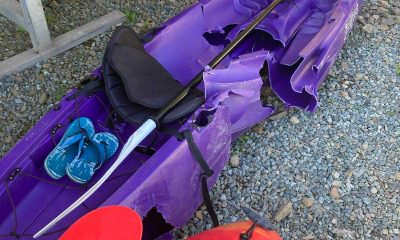
 Crime2 days ago
Crime2 days agoPembrokeshire haven master admits endangering life after speedboat collision
-

 Crime10 hours ago
Crime10 hours agoMother admits “terrible idea” to let new partner change her baby’s nappies alone










